Side rabbet planes perform a limited function but one that no other tool does nearly as well. They accurately widen grooves and dados to create precise-fitting components in fine woodworking. So, you don’t really need these tools – that is, until you really need them. And that time will probably come along.

Anatomy of the side rabbet plane
These planes are designed to take shavings from the sidewalls of shallow trenches in wood. The cutting edge is therefore vertical and supported by a narrow structure that fits within the trench. This differs from using a shoulder plane, which also can be used with its cutting edge vertically oriented, but only in a situation such as a rabbet or a tenon shoulder where there is unrestricted side access to plane the vertical wall.
As seen in the photo below, the side rabbet plane tool has a short, skewed blade that is bedded bevel up at a low angle, 8 degrees in this example, and secured with a simple cap clamp. This arrangement effectively cuts both side grain and end grain. Cutting depth is adjusted by tapping the blade with a small hammer; there is no screw feed mechanism.
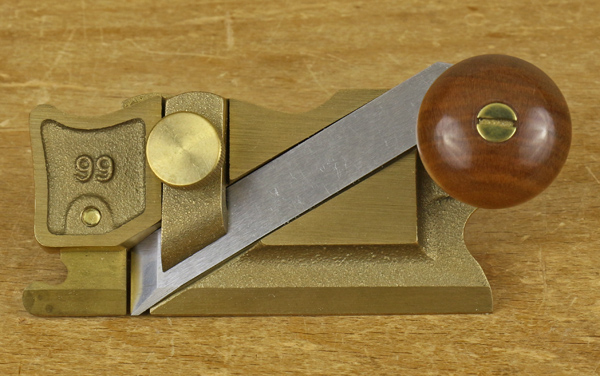
Note that the blade must be sharpened at a fairly precise skew angle to match the mouth because there is minimal clearance for lateral adjustment in the bed channel. This way the edge projection will be even across the width of the mouth and so will take a uniform-width shaving. Also note that the acute angle at the bottom tip of the blade must be slightly ground back to prevent it from extending below the skate.
The back view shows the depth stop that rides on the surface of the wood. This is adjusted to make the tip of the blade just reach to the bottom of the groove. As it cuts, the plane rides on a narrow skate, as well as its inner side and the depth fence. The end-on view shows the narrow width of the skate that will fit into grooves as narrow as about 1/8″.

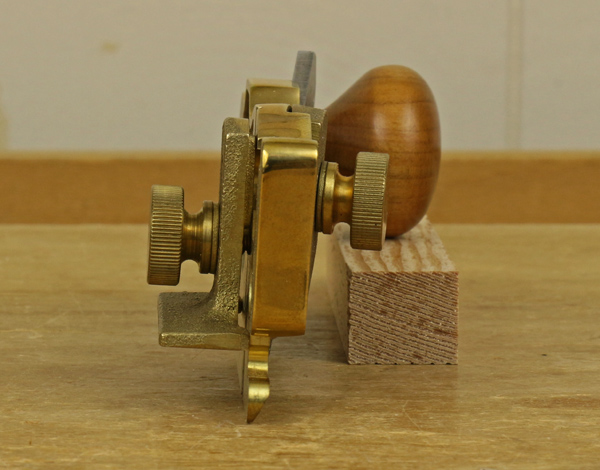
In its usual configuration as seen above, the toe (front piece) of the skate is about 7/8″ long. It can be reattached upside down to employ a very short toe in front of the blade, as shown below. This bull nose configuration permits work very close to the end of a stopped groove while still affording some support in front of the blade. The toe piece can be completely removed, as seen in the second photo below, to make the tool function as a chisel plane that will cut all the way to the end of a stopped groove.
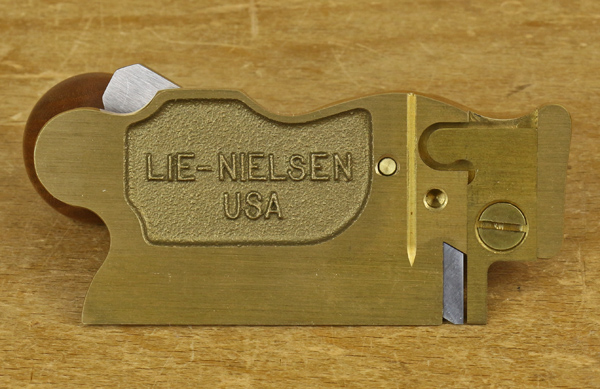
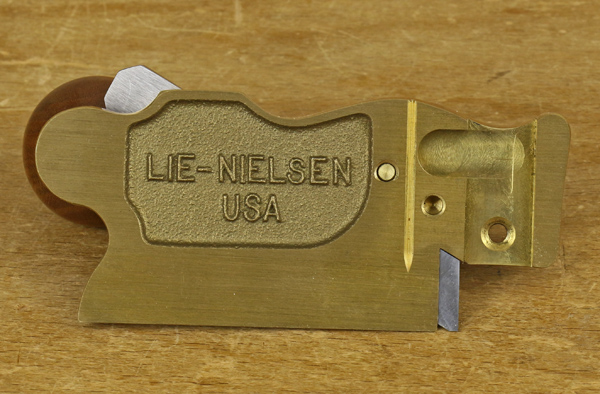
But why do you have two of them?
I don’t. I have one of each. These are the Lie-Nielsen #98 and #99 planes, inspired by vintage Stanley planes. Note that they are basically mirror images of each other. This allows you to plane on either side of a groove and always plane with the grain direction. Further, it allows you to plane to either end and on either side of a stopped groove.
Siblings, twins, cousins
I like my #98-99 team. The toe is versatile and the wooden handle gives me a nice grip. However, as with every other woodworking tool, there’s more than one good approach.
Stanley used to make a #79 side rabbet plane that is effectively a #98 and #99 joined end to end without the wooden handle, so that it is simply used in either direction. Kunz currently makes a similar though less elegant version.
Yet another type is essentially the #98 and #99 joined side to side without the wooden handle, so that one or the other side is used to accommodate different grain directions. This is the approach used in vintage Preston models and currently in the Veritas side rabbet plane.
While handy and less expensive, these bidirectional designs do not have quite as much versatility in toe configurations as the #98-99 pair.
Japanese wooden side rabbet planes are much longer with a much longer sole infeed (toe). This gives them an advantage in steadying the cut in long, open-ended grooves, but disqualifies them for tight work in stopped grooves.
Technique
Like all small specialty planes, a super sharp blade is a must to get decent performance from side rabbet planes. Adjust the blade to take a light/medium shaving – you are just trimming and fitting to fine tolerances, not hogging. Examples are fitting a panel long grain into a groove or adjusting the tightness of a sliding panel in its groove, particularly in situations where you want to alter the groove rather than the thickness of the panel.
Choose the correct plane or end or side of the plane to plane with the grain direction. (For end grain work, this is not an issue.) Gently set the plane in the groove and drop the depth stop to the top surface and tighten it, as shown below.
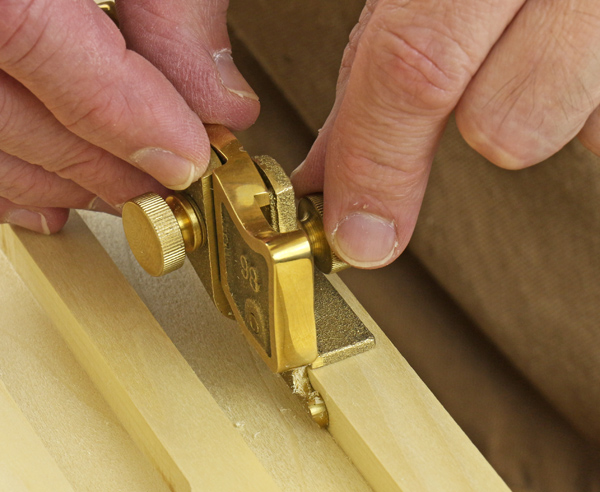
Because the toe section of the skate is short, starting the cut requires extra care with pressure placed on the forward part of the plane. As the cut proceeds, maintain lateral pressure, especially at the rear of the plane to prevent the cutting edge from diving in too deep. I find it also helpful to press the thumb of my left hand on the depth stop.

Here’s a special tip
Making a well-fit sliding dovetail by machine can be a frustrating job in woodworking. Once the female portion is machined, it is usually impractical to alter its width. The width of the male portion can be reduced in fine increments by planing the sides with a side rabbet plane. The bottom of the skate must be modified by filing it to about a 15° angle to easily fit in the acute recess of the dovetail.
Take an online woodworking class!
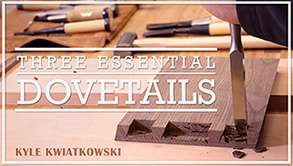 Advance your woodworking with not one but three impressive dovetail joints! Sign up for Three Essential Dovetails taught by expert woodworker Kyle Kwiatkowski and enjoy your HD video lessons, anytime, anywhere, with unlimited access to your online class.
Advance your woodworking with not one but three impressive dovetail joints! Sign up for Three Essential Dovetails taught by expert woodworker Kyle Kwiatkowski and enjoy your HD video lessons, anytime, anywhere, with unlimited access to your online class.
What makes online Craftsy classes great?

Learn for life! With lifetime access to your classes, you can watch lessons at your preferred pace and easily revisit your favorite concepts with just a click.

Kick up your feet! Enjoy classes anytime from the convenience of your home or even on-the-go with our mobile apps.

Get personalized guidance! Ask your instructor questions to receive all the answers and feedback you need to succeed.

Love it! There’s no risk in trying with our 100% money back guarantee.

Share tips, start a discussion or ask one of our experts or other students a question.
No Responses to “Side Rabbet Planes: Do You Really Need Them?”